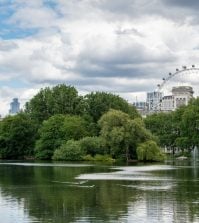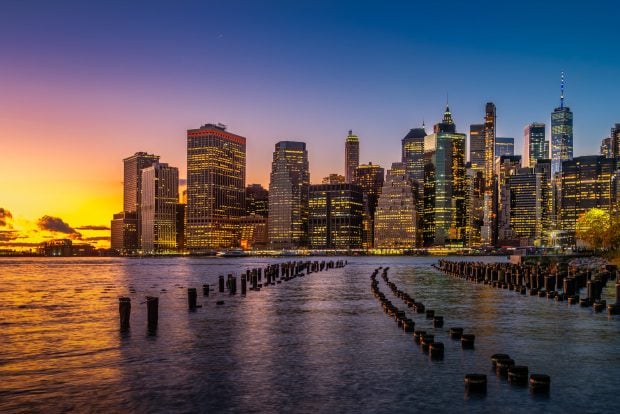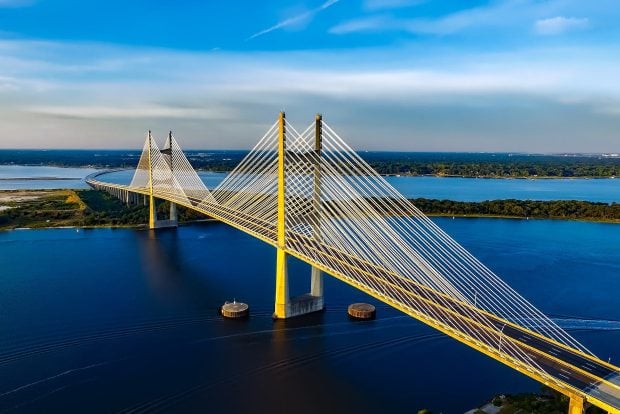Autumn for urbanism? Cities after the pandemic

Since COVID-19 arrived, demand for homes and offices has moved out of city centres – raising questions over their future. Adam Branson asks whether this shift will endure, and considers how cities are likely to develop in the post-pandemic world
In August last year, author, comedy club owner and former hedge fund manager James Altucher published a blog headlined “NYC is dead forever. Here’s why”. Republished by the New York Post, it attracted a lot of attention – and Altucher’s views are far from unique. In the wake of the pandemic, commentators around the world have predicted, the prevailing global trend towards urbanisation will be reversed.
For those who love city living, the articles appear to signal a backwards step. After all, as Harvard economist Edward Glaeser argued in his 2011 book Triumph of the City, the evolution of urban living represents mankind’s greatest achievement – and its best chance of tackling some of humanity’s most pressing problems, not least climate change.
But to what extent are claims of the death of the city premature? And if – as seems likely – the COVID-19 crisis does genuinely lead to lasting change in how we live, work and play, how can city and national governments best respond?
Certainly, some of the data does not look encouraging. To take just one example, Nicholas Bloom, a professor in the Department of Economics at Stanford University, recently published a report that examined changes in residential and commercial property rents and capital values in the last year in major cities in the US. He found that prices in dense urban centres have declined but values in leafier suburbs have increased, both to substantial levels.
A shift to the suburbs
For instance, Bloom writes that in Manhattan’s Battery Park neighbourhood, which is located close to Wall Street, there was a 9.6% decrease in prices from the last three months of 2019 to the last three months of 2020. “By contrast, middle-class residential neighbourhoods like suburban Suffolk County on Long Island have boomed,” he says. “Home prices in Suffolk County are up in every zip code, with an average increase of 7.2 percent over the same period.”

It’s a similar situation when it comes to offices, with office values in the densest areas of cities in the US seeing the most dramatic fall. “The effect [was the] most pronounced in the densest zip codes,” he says. “Overall, we estimate the pandemic led to a 10 per cent drop in commercial office building prices in the densest decile of zip codes relative to other zip codes.”
The data for other cities tells much the same story – of people fleeing dense areas of cities for places with more space and that better enable social distancing. Quite simply, and for understandable reasons, people are scared of each other. That’s what happens with a highly-infectious virus that can be transmitted asymptomatically. However, what the data does not tell us is whether the flight from city centres will prove to be a permanent phenomenon.
Finding a middle way
People have been enabled to leave urban areas by the fact that home working has been not just encouraged, but required in many places. But the extent to which that will last is debatable. For every CEO like Goldman Sachs boss Larry Fink, who has described home working as an “abomination”, there is another, like Facebook’s Mark Zuckerberg, who appears to have no problem with it on an ongoing basis.
Paul Swinney, director of policy and research at the UK’s Centre for Cities, argues strongly that the home working phenomenon will diminish over time. “The discussion during the pandemic has changed: a lot of the comment early on was that we’re going to work from home forever and the office is completely dead and we don’t need it anymore,” he says.
“But then the mood changed around last September or October time, when people started talking about hybrid working. So, all of a sudden, there was an acceptance that actually there is some benefit of being in the office, but we want the best of both worlds. We want the best bits of the office and the best bits of working from home as well. And that seems to be continuing.”
The pull of the office
Swinney believes that employers’ tolerance of flexible working patterns will soon start to wane. “If we think about what the benefits of the office are, they are junior colleagues, particularly those fresh out of university, being able to learn from older colleagues,” he says. “Then there’s creativity – bringing people together to spark new ideas and new innovations. That ultimately drives an organisation.”
Lee Polisano, president of international architecture practice PLP, adds: “I can’t dispute that [our younger workers] weren’t productive at home, but being productive and being innovative and creative are two different things. In terms of the innovation and creativity that we’re normally able to produce when we’re all together, I think we were at 50%. We might have been at 90% in terms of productivity”.
In addition, Swinney says that many employees will soon understand that it is in their best interests to be in the office as much as possible, whether or not they are required to be. “If you’ve got a colleague in the office and they’re talking to the boss and influencing decisions in the room and you’re stuck at your kitchen table, I think that also has the potential to draw people back,” he says.
All of which means that there is unlikely to be vast amounts of office space lying vacant in city centres – which in turn means that they are likely to regain their vibrancy, at least in the medium term. “I don’t think there will be a shift in spatial policy or anything like that,” says Swinney. “Most of the offices are going to be needed. The ability for companies to reduce office space will be fairly limited.”
A flexible future
However, the design of buildings is still likely to change in light of the pandemic. Investors, developers and designers were already moving to include a greater range of uses within buildings and neighbourhoods before COVID-19 struck, and this trend is likely to accelerate: the pandemic has illustrated starkly that single-use buildings, be they office blocks or shopping centres, can become entirely redundant in an emergency.

“I think the single-use office building should be dead,” says Polisano, adding that additional uses such as residential, retail, hospitality and community facilities should all be thrown into the mix. “If people in real estate investment recognise that, they’ll add greater value to their communities and to their buildings in the future.”
Ricardo Alvarez, postdoctoral fellow in the Department of Urban Studies and Planning at the Massachusetts Institute of Technology (MIT), made a similar point in a recent paper. “In cities around the world right now, stores and office buildings are shuttering,” he wrote. “It illustrates how risky it is for owners to invest in buildings that are tailored for only one use. Single-use design of space is inherently fragile, since it limits the degree to which space can host human activity.”
Multifunctioning buildings – and indeed districts – also point the way forward for the retail sector. In 2019, traditional retail areas and shopping centres were already suffering from the rise in online shopping, which again was accelerated by the advent of the pandemic. According to Ken Shuttleworth, founder of architecture practice Make, many shopping centres are now worth less than it would cost to demolish them. Mixed areas, on the other hand, are bouncing back.
“I think retail is going to really become more about destinations where you go and eat and drink and enjoy yourself,” he says. “Everybody’s been ordering everything online, much more than they were pre-pandemic and I don’t think people are going to stop doing that. Centres need to be much more mixed-use. That is a fundamental change that we’re seeing.”
To illustrate the point, Polisano contrasts the current situation around his office in the City of London with what’s happening in Mayfair in the West End. “If you go out, for most of the day you still don’t see a lot of people” in the City, he says. “Mayfair, however, because it’s a mixed-use community, it looks like a normal day. So, mixed use city centres are quite important.”
A new shape for cities
There is, of course, a role for planning authorities in driving such change, but government – be it at a city or national level – has an even bigger role in other areas. For instance, as cities around the world locked down in early 2020, the volume of traffic on the roads plummeted. Within a matter of days, air quality improved markedly.

Traffic and pollution levels have since increased again, but lockdown provided a glimpse of how more sustainable transport systems could improve the sheer liveability of urban areas. And that awareness – alongside pressing carbon reduction targets – may encourage authorities to look at the potential of new technologies, such as fleets of autonomous electric vehicles, with greater urgency.
As Alvarez points out, research shows that cars currently spend around 95% of their time parked. For every self-driving car that is deploy optimally, he says, cities could remove eight vehicles from the road – reducing the need for road capacity and parking spaces. “This is going to translate to acres and acres of new space, right in the hearts of dense and expensive cities,” he says.
“The natural dynamics of urban and real estate economics tells us that developers will leap to grab up this space, but cities will also have an opportunity to utilise it for things like affordable housing or public infrastructure. Cities need to be better prepared for such technological developments and plan their strategies accordingly.”
If planned for properly, all that space could be used to provide more green infrastructure in city centres, including parks and communal gardens. Such spaces were already highly valued, but in lockdown they became essential for citizens’ health and wellbeing. “We know that there was a flight to the outdoor space and quality of outdoor space,” says Polisano. “I do think there needs to be a shift to recognising that outdoor space is quite important.”
So, it seems that reports of the city’s demise are greatly exaggerated. However, urban areas will change as a result of the pandemic – and the hope is that they will change for the better. “I think that we still want to live in cities; we still want to work in cities,” says Shuttleworth. “But I think they’re going to be greener. Health and wellbeing have become very important during the pandemic.”






















“tolerance of flexible working patterns”
This made me chuckle.
The best people wont tolerate anything other than flexible working patterns – because the no longer have to.